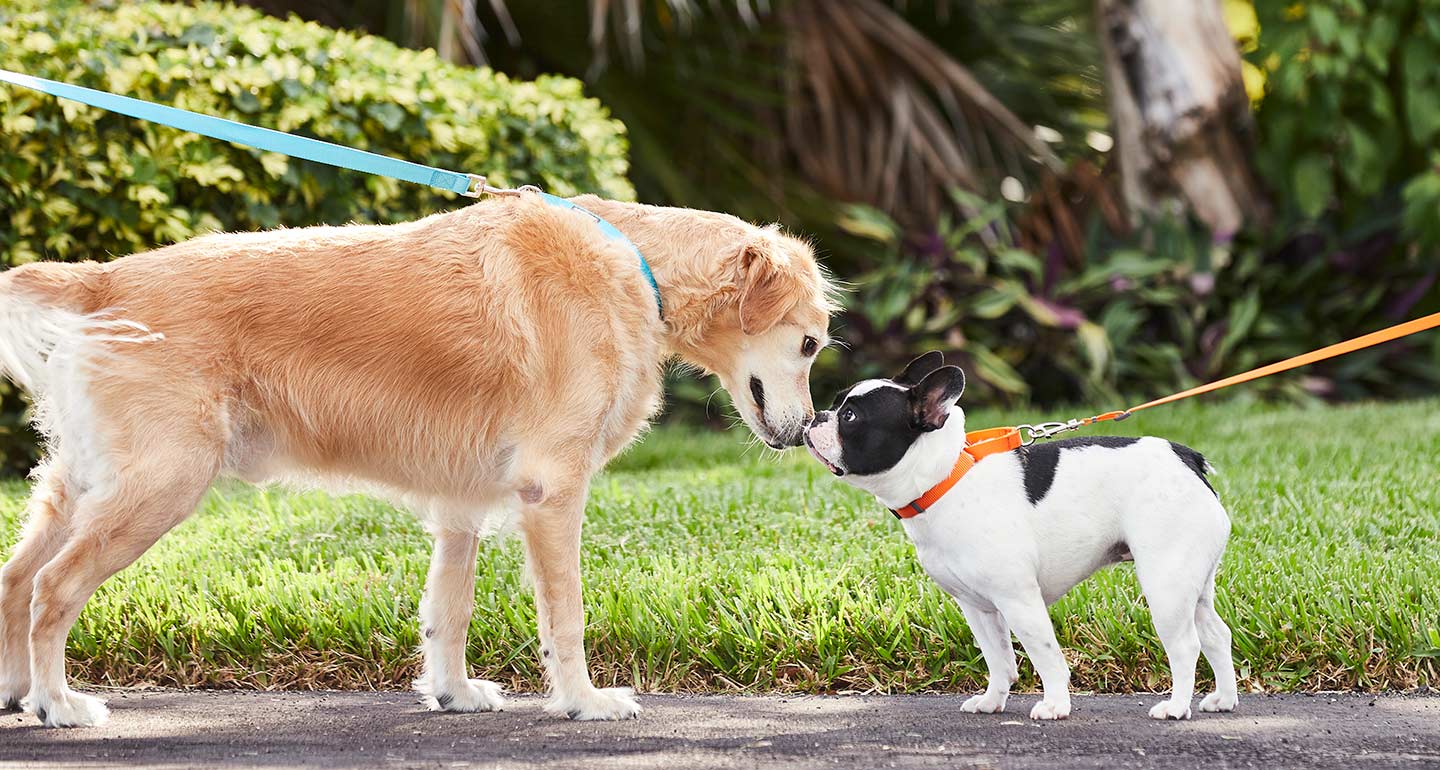Introducing older dogs to other pets can be a delicate process. It requires patience, understanding, and careful planning.
As dogs age, their habits and temperaments can become more fixed. This makes socializing them with new pets a bit challenging. Older dogs may feel threatened or become anxious around new animals. But don’t worry, it is possible to help your senior dog adjust and even enjoy the company of other pets.
In this guide, we will explore practical tips and strategies to make this transition smoother for your older dog. With the right approach, you can create a harmonious home where all your pets can coexist happily.
Also Read

Credit: pacificpupsrescue.com
Benefits Of Socializing Older Dogs
Socializing older dogs with other pets can bring numerous benefits. As dogs age, their needs change. Social interaction can significantly improve their quality of life. Let’s explore some key benefits.
Improved Mental Health
Socializing older dogs can help stimulate their minds. Interaction with other pets can reduce feelings of loneliness and anxiety. Mental stimulation is essential for older dogs to stay alert and active.
When they engage with other pets, they enjoy new experiences. This reduces boredom and can improve their overall mood. A happy dog is more likely to have a positive outlook on life.
Enhanced Physical Well-being
Playing and interacting with other pets can also benefit their physical health. Older dogs often become less active as they age. Regular playtime can keep them moving and help maintain a healthy weight.
Physical activity helps to strengthen muscles and joints. It can also improve cardiovascular health. Socialization encourages regular movement, which is crucial for their longevity.
| Benefit | Details |
|---|---|
| Mental Stimulation | Reduces loneliness, anxiety, and boredom. |
| Physical Activity | Helps maintain weight and strengthens muscles. |
| Overall Happiness | Improves mood and quality of life. |
Assessing Your Dog’s Temperament
Socializing older dogs with other pets can be a gentle process. Introduce them slowly and watch their reactions. Patience and consistency are key for building positive relationships.
Assessing your older dog’s temperament is key before introducing new pets. Understanding their behavior helps prevent conflicts. Older dogs may have set habits. These need to be considered.Signs Of Anxiety
Anxious dogs show specific signs. They might tremble or pant heavily. Some may refuse food. Others could hide in corners. Watch for excessive licking or yawning. These are subtle signs of stress.Indicators Of Aggression
Aggression in dogs can be evident. Growling is a clear sign. Snapping at other pets is concerning. Raised fur on the back is another indicator. Watch for rigid body posture. Bared teeth show a readiness to bite. Always observe your dog’s behavior closely. “`Introducing New Pets Gradually
Introducing new pets to an older dog can be challenging. It requires patience and a step-by-step approach. This process will help both pets feel safe and comfortable. Gradual introductions can reduce stress and prevent conflicts. The goal is to create a peaceful environment for all pets involved.
Supervised First Meetings
Always supervise the first meetings between your older dog and the new pet. Keep these sessions short and positive. Use treats to reward good behavior. Stay calm and relaxed to reassure your pets. If either pet shows signs of stress, separate them and try again later.
Using Barriers For Safety
Use barriers like baby gates to separate the pets initially. This allows them to see and smell each other without direct contact. Barriers provide a safe way for pets to get acquainted. Gradually remove the barriers once both pets seem comfortable. Ensure you stay close by to intervene if needed.
Creating A Safe Environment
Creating a safe environment is essential for socializing older dogs with other pets. Older dogs might feel anxious or territorial in new situations. Ensuring a safe, comfortable space for both the older dog and other pets helps reduce stress and promotes positive interactions. Let’s explore how to create this safe environment.
Designated Spaces For Each Pet
Each pet should have its own designated space. This space provides a sense of security and ownership. Designating specific areas prevents conflicts and allows pets to retreat when needed.
- Set up separate feeding areas.
- Provide individual sleeping spots.
- Ensure toys and belongings are kept in their spaces.
Using baby gates or pet barriers can help manage spaces. These tools allow each pet to observe the other without direct contact. This gradual introduction helps ease tension.
Safe Zones And Retreat Areas
Safe zones are crucial. These areas allow pets to relax and feel secure. Older dogs, in particular, may need more quiet time and space.
| Pet | Safe Zone Ideas |
|---|---|
| Older Dog | Quiet room, cozy bed, low traffic area |
| Other Pets | Separate room, own bed, private corner |
Each safe zone should have water, bedding, and favorite items. This comfort zone helps pets feel secure and reduces anxiety.
Observe pet interactions. If tension rises, guide pets back to their safe zones. Respecting these areas is key to creating a harmonious environment.
Positive Reinforcement Techniques
Socializing older dogs with other pets can be challenging. Using positive reinforcement techniques can make the process smoother. These methods rely on rewarding desired behaviors, which helps your dog associate good things with positive actions. Let’s explore some effective techniques under this approach.
Rewarding Calm Behavior
One of the most important aspects of positive reinforcement is rewarding calm behavior. When your dog remains calm around other pets, offer a reward. This could be a treat or verbal praise. This helps your dog learn that staying calm brings good things.
Create a calm environment first. Introduce your dog to the other pets in a controlled setting. Keep interactions short at the beginning. Gradually increase the duration as your dog shows more calmness.
Using Treats And Praise
Treats and praise are powerful tools in positive reinforcement. Use them wisely to encourage good behavior.
- Offer small, tasty treats for calm and friendly behavior.
- Combine treats with verbal praise like “Good dog!”
- Ensure your dog associates the treat with the desired behavior.
Praise works well too. Use a happy tone to let your dog know they did well. Consistency is key. Always reward immediately after the desired behavior.
| Behavior | Reward |
|---|---|
| Staying calm | Treat or praise |
| Friendly interaction | Treat and praise |
| Ignoring distractions | Treat |
Remember, each dog is unique. Adjust the rewards to what your dog likes most. Use these techniques consistently to see the best results. Your dog will soon learn that socializing with other pets is a positive experience.

Credit: be.chewy.com
Building Consistent Routines
Building consistent routines is crucial for socializing older dogs with other pets. Routines provide structure and predictability, helping older dogs feel secure. It helps them adapt to new pets and environments. Consistency reduces anxiety and fosters positive interactions. Here are some key aspects of building consistent routines:
Scheduled Playtimes
Setting up scheduled playtimes helps older dogs anticipate interaction with other pets. Choose a specific time each day for play. This regularity helps dogs build confidence and trust.
During playtime, supervise interactions to ensure safety. Use toys and activities that both pets enjoy. Rotate toys to keep things interesting. Short, frequent sessions are better than long ones.
Consistency in playtime routines can strengthen the bond between pets. Over time, they will look forward to these sessions and interact more positively.
Regular Feeding Times
Establishing regular feeding times is another key aspect of routine building. Feed your dogs and other pets at the same times each day. This helps older dogs feel secure and reduces food-related aggression.
Feed pets in separate areas if necessary. This ensures that each pet can eat comfortably. Gradually, you can bring their feeding areas closer together. This helps them associate mealtime with positive experiences.
Consistency in feeding schedules helps pets understand expectations. It promotes harmony and reduces tension during mealtime.
| Routine | Benefits |
|---|---|
| Scheduled Playtimes | Builds confidence, trust, and strengthens bonds |
| Regular Feeding Times | Promotes security, reduces aggression, and fosters harmony |
Building consistent routines is essential for socializing older dogs. It creates a stable environment, reducing stress and promoting positive interactions.
Monitoring Interactions Closely
Socializing older dogs with other pets can be challenging. Ensuring their safety is crucial. Monitoring interactions closely helps prevent conflicts. It fosters positive relationships. Understanding the dynamics is key. It’s important to watch for signs. Knowing when to step in is essential.
Recognizing Warning Signs
Recognizing warning signs can prevent serious issues. Look for these common indicators:
- Growling or snarling
- Stiff body language
- Prolonged staring
- Raised hackles
- Tail tucked between legs
These signs suggest discomfort. Separate the pets if you see them. Take note of any changes. Consistent monitoring is key.
Intervening When Necessary
Intervening when necessary can prevent fights. Here’s how to do it:
- Use a calm voice to distract them.
- Place a barrier between the pets.
- Redirect their attention with toys or treats.
- Lead them to separate areas if needed.
Stay calm during interventions. Your pets will sense your energy. Consistency is important. Repeat these steps as needed.
Monitoring interactions can be a rewarding experience. It helps build trust and ensures harmony.

Credit: www.houndslounge.com
Seeking Professional Help
Professional help can make socializing older dogs with other pets easier. Experts can provide tailored strategies for smooth introductions. This ensures a positive experience for both dogs and other pets.
Socializing older dogs with other pets can be challenging. Seeking professional help may be the best option. Professionals have the knowledge and experience to manage this process effectively. They can provide tailored advice and support.Consulting Animal Behaviorists
Animal behaviorists are experts in understanding pet behaviors. They can identify the root causes of socialization issues. These professionals use science-based methods to address these concerns. Consulting an animal behaviorist can make a significant difference. They can create a personalized socialization plan for your dog.Enrolling In Training Classes
Training classes offer a structured environment for socialization. Trainers guide you and your dog through specific exercises. These classes often include interactions with other pets. This helps your dog learn appropriate social behaviors. Enrolling in training classes can boost your dog’s confidence. It also provides a safe space for learning and growth. “`Frequently Asked Questions
How Can I Socialize An Older Dog?
Start by introducing them in neutral territory. Use positive reinforcement and be patient. Gradual exposure helps.
Are Older Dogs Harder To Socialize?
Older dogs may take longer to adapt. Consistency and patience are key to successful socialization.
What Are The Benefits Of Socializing Older Dogs?
Socializing older dogs reduces anxiety, improves behavior, and enhances their quality of life.
Can Older Dogs Learn To Get Along With Cats?
Yes, older dogs can learn to coexist with cats. Slow and supervised introductions are crucial.
Conclusion
Creating a peaceful home for older dogs and other pets takes time. Patience and consistent training make a big difference. Observe their interactions and adjust as needed. Celebrate small progress. Socializing older dogs can enhance their lives. They can build new friendships and enjoy a more enriched environment.
Remember, each pet is unique. Respect their pace and comfort levels. With love and dedication, successful integration is possible. Your efforts will lead to a happier, harmonious household. Keep going, and enjoy the journey with your furry friends.



